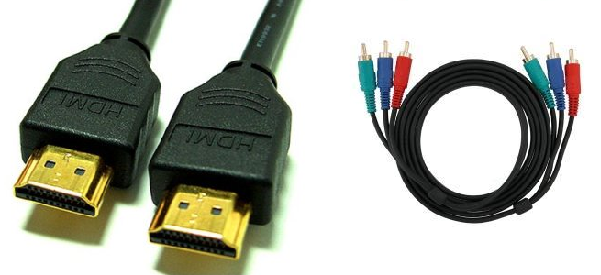The transition from analog signals has been slow, but steady, and nowadays it’s not uncommon to see HDTV’s in people’s living rooms. Here’s how to get the most of them.
Up until a while ago, HDMI in our everyday stuff like computers, media players or video game consoles weren’t that common. As technology progressed, though, more options became available, and now we are at a point where the only thing preventing us from going one way or the other is our personal preference. So, if we want the best image quality, should we go with HDMI, or with Component Video Cables?
First of all, this is all a matter of preference, and what you want to use your displays for. It’s really hard to do a comparison instead of just looking with your own eyes. One thing going on for HDMI that definitely gives it an edge is the fact that it’s more comfortable, carrying not only video signals but also audio without having to plug more than one cable. HDMI carries a digital signal with all the information from the source to the display, and there’s hardly any quality loss, so your sound and image up to 1080p. Still, just this doesn’t mean that Component Video Cables are not capable of high resolutions, being also capable of 1080i and 720p (basically, 1080p or 1080i mean how fast is the refresh rate, if 60 frames per second or 30 frames per second).
If you are going to watch a Blu-ray, or play video games on Xbox 360 or Playstation 3 systems, you should always go for HDMI, as the format will get the best frame rate and resolution. If you’re going to, for example, play with a Wii, or use a DVD player instead, then it’s a matter of preference, and you should try both and see which one works best for you. Keep in mind that displaying a too high resolution of a source material that is too small can lead to some uncomfortable upscaling and image distortion, although this is rarely an issue with commercial media.
In conclusion, HDMI will usually be more comfortable, carrying sound and video in just one cable, and best for high resolution media (displaying from a computer, Blu-Ray, or videogame console), but with older formats, it boils down to personal preference and the source of the display. Don’t expect your old home videos to look better just because you changed a cable.
To see more crazy resolution and displays stories, check the Raspberry Pi Computer that Runs Quake 3 and Air Display for Mac Gives you the Extra Monitor You Never Had.











